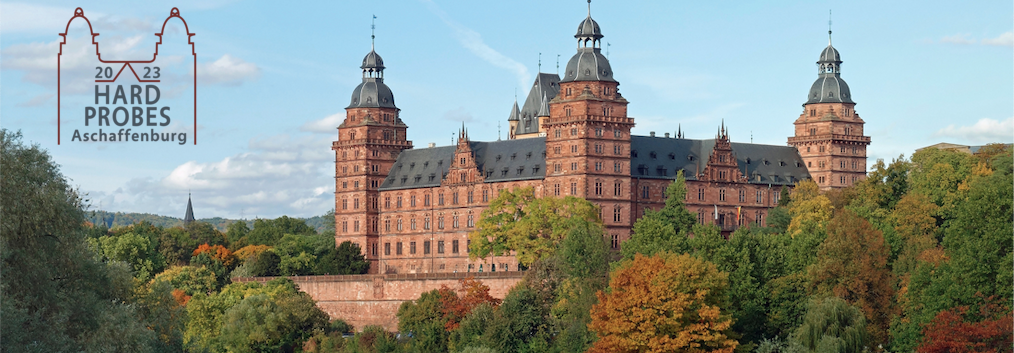Sprecher
Beschreibung
Partonic scatterings with large momentum transfer occur before the formation of the quark-gluon plasma (QGP) in heavy-ion collisions, resulting in collimated collections of hadrons known as jets. As a jet traverses and interacts with the QGP medium, it loses energy via collisional and radiative processes, known as jet quenching. The magnitude of the energy loss can be quantified by the ratio of hadron or jet yields in A+A and p+p collisions, know as the nuclear modification factor ($R_{\rm{AA}}$). The high-statistics 2018 STAR isobar data, comprised of Zr+Zr and Ru+Ru collisions, offer the opportunity to study the system size dependence of nuclear modification for hard probes. A measurement of the inclusive charged hadron $R_{\rm{AA}}$ differentially with the average number of participants ($\left\langle N_{\mathrm{part}}\right\rangle $) in the isobar collisions will be presented with comparisons to both smaller and larger sized systems. In addition to studying the total energy loss via $R_{\mathrm{AA}}$, the path-length dependence of jet quenching processes can be studied by measuring the azimuthal anisotropy of jet yields relative to the event plane, quantified by the second-order Fourier coefficient $v_2^{\rm{jet}}$. A finite $v_2^{\rm{jet}}$ is expected in mid-central heavy-ion collisions where a highly ellipsoidal QGP medium is formed, resulting in jets traversing in-plane interacting with less medium than those out-of-plane. Measurements of $v_2^{\rm{jet}}$ in isobar collisions spanning multiple jet resolutions will be presented. Ongoing work to use event shape engineering to more precisely control the path length of the initiating partons will also be shown.
Affiliation
STAR
| Experiment/Theory | STAR |
|---|
